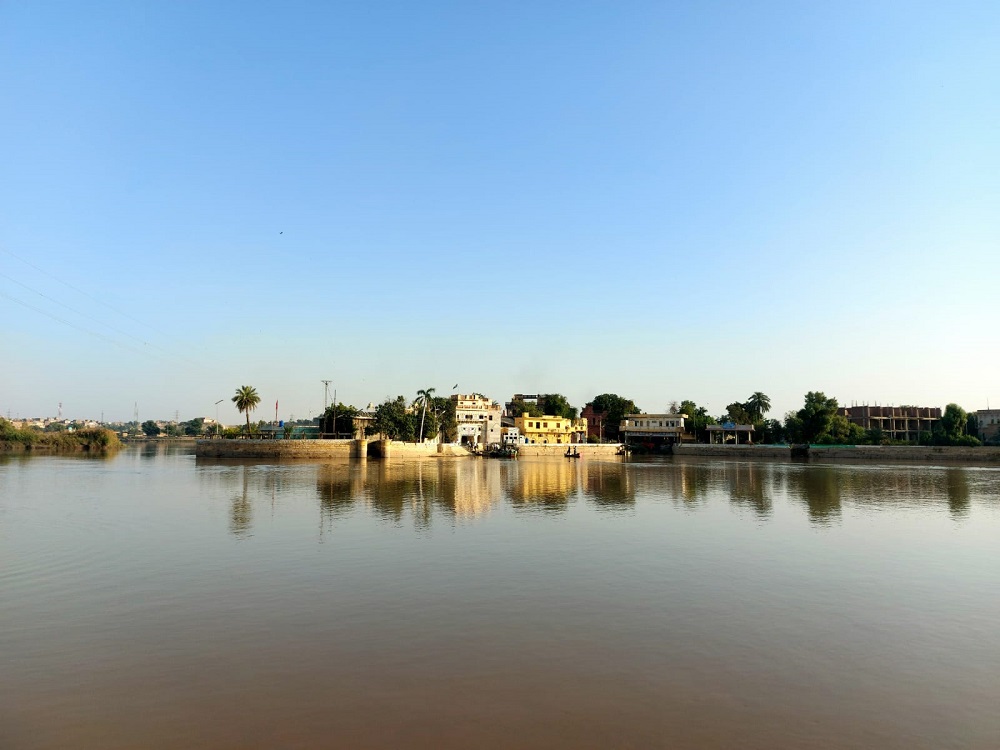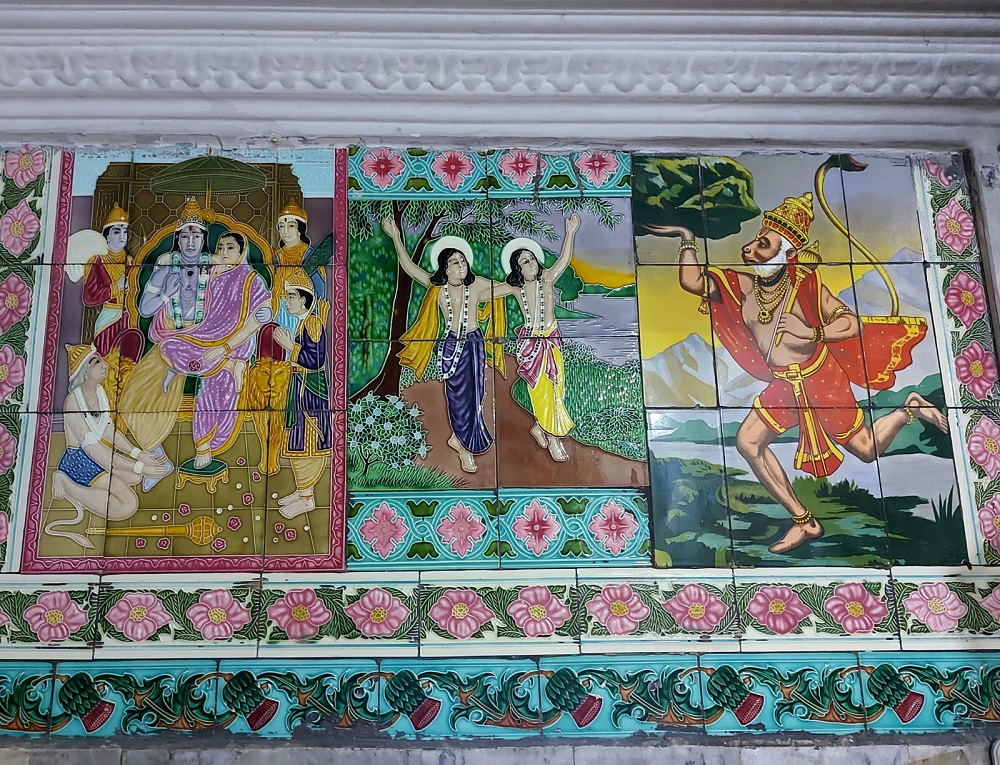Originally published in Youlin Magazine. November 28th, 2022.
On a boat ride atop the Indus in Sukkur, the city comes to life. While the engineering marvels of the bridges and barrage greet you at the front, the city skyline also brushes against your vision. The river runs between Sukkur and Rohri, but these twin cities form more of a continuum than the locals might be willing to acknowledge. The Indus then becomes the sole point of distinction, filled with its many stories and wonders.
The temple of Sadh Belo, literally translated as “woods of the sage,” sit neatly on an island in the middle of Indus. In the wake of the recent floods that wreaked havoc in the country, access to the island was compromised, but the unruly waters of the Indus had steadied somewhat, the day I went there. The temple, an architectural wonder where detailed emblems in marble present everything in magnificent detail, from statues of deities to depictions of heaven and hell, the complex comprises nine temples. The temple is generally said to have been constructed around 1889, even though the foundation of the place as a religious one was laid much earlier. Baba Bankhandi Maharaj, a spiritual seeker from Nepal, settled in the area in 1823, which was then a forest and was called Menak Parbat. It is said that he saw Mother Annapurna, the goddess of grain, in a dream and resolved to build a temple for her. The temple associated with the Udaasi movement, whose religious practices border on a syncretism of Hinduism and Sikhism, soon gained a following. The temple bustles with activity throughout the year, but especially during the Hindu festivals. The anniversary of the Baba is also celebrated every year at the temple with much fanfare. There are various facilities in the complex, rooms to house the guests, a library, gardens and dining areas.
The little boat ride to the island is quite an experience in itself, as the decor of the temples and the figures on it are riveting because in such pristine and colorful condition. However, that is not the only thing to warrant your attention there. As we were busy chatting with the caretaker of the temples, who was narrating to us stories of the gaddi nasheen (heirs of the temple), who live in India but pay regular visits to the temple, our attention was drawn to the ripples in the deep waters of the Indus – for it was Bhulan – the legendary blind dolphin who lives only in the Indus. It is difficult to spot these dolphins, for with their population is dwindling and they are an endangered species. Current estimates of the population of dolphins put them at less than 2000. Interestingly, the same barrage and irrigation system that provided so much succor to the people, ended up being harmful to the water’s inhabitants. And then nothing in the region comes without a story, and the dolphin is no exception. The legend goes that the dolphin was once a woman, but she was cursed by a saint to whom she overlooked giving food one day. She has existed as a blind dolphin since that day. There are other equally imaginative stories: from believing the dolphin to have supernatural powers to dwelling on her possibilities as a mermaid, Bhulan continues to inspire the attention of locals and travelers alike.
However, the legend of the dolphin is not the only thing associated with the river. In terms of legends and stories, the Indus is the Sheherzaad of rivers. A number of mystical creatures teem in its presence, the mention of the Indus has been consistent in many religious and Sufi epics, and it is nothing less than a lifeline to the area it passes through, encompassing a wide range of the land of Pakistan. Every now and then, the waters in the Indus grow tired of their monotony, and result in disastrous floods. I visited Sukkur just a few months after the latest bout of floods that had taken the country by storm.  In many ways, Sadh Belo and its festivities are a fitting tribute to the eccentricity of the river it floats inside. The Indus has also been termed “Abbasin”, the father of rivers, and it’s fitting that Sadh Belo is also considered one of the most outstanding temples in Pakistan. The stories of enlightenment and quest associated with the temple are, by definition, stories of the river itself. The fact that Hindu pilgrims from India can only visit this revered temple in times of cordial exchange between the countries attests to the potential wrath of the river. And finally, Muslims having to seek permission to visit the temple tells one something about divisions: of rivers and people, and of history and legacy. Sadh Belo and Indus—both as divine as they are human—are a lesson in not turning our backs on the prospects of possibility.
In many ways, Sadh Belo and its festivities are a fitting tribute to the eccentricity of the river it floats inside. The Indus has also been termed “Abbasin”, the father of rivers, and it’s fitting that Sadh Belo is also considered one of the most outstanding temples in Pakistan. The stories of enlightenment and quest associated with the temple are, by definition, stories of the river itself. The fact that Hindu pilgrims from India can only visit this revered temple in times of cordial exchange between the countries attests to the potential wrath of the river. And finally, Muslims having to seek permission to visit the temple tells one something about divisions: of rivers and people, and of history and legacy. Sadh Belo and Indus—both as divine as they are human—are a lesson in not turning our backs on the prospects of possibility.